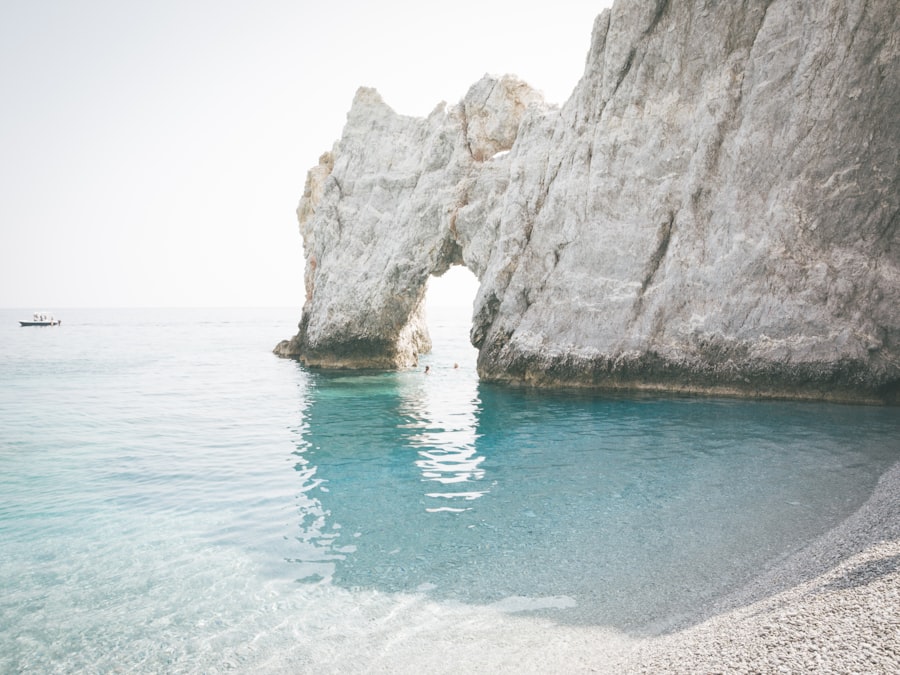Rediscovering Paradise: The Allure of Boracay
Description
Boracay, a small island in the central Philippines, has undergone a remarkable transformation over the decades. Initially, it was a little-known paradise, frequented only by adventurous travelers and locals who appreciated its pristine beauty. The island’s history can be traced back to the early 1970s when it was primarily inhabited by indigenous Ati people.
They lived a simple life, relying on fishing and farming for sustenance. The island’s allure began to attract attention in the late 1970s when backpackers discovered its stunning beaches and laid-back atmosphere. This marked the beginning of Boracay’s journey from obscurity to becoming one of the most sought-after tourist destinations in the world.
As the years progressed, Boracay’s popularity surged, particularly in the 1980s and 1990s. The island’s reputation as a tropical paradise spread like wildfire, leading to an influx of tourists from around the globe. The once-quiet shores of White Beach became lined with resorts, restaurants, and bars catering to the growing number of visitors.
However, this rapid development came at a cost. By the early 2000s, concerns about environmental degradation and over-tourism began to surface. The Philippine government recognized the need for intervention, leading to a series of initiatives aimed at preserving Boracay’s natural beauty while accommodating the demands of tourism.
Key Takeaways
- Boracay has transformed from a hidden gem to a bustling tourist destination over the years.
- The island is known for its stunning white sand beaches and crystal clear waters, making it a paradise for beach lovers.
- Boracay offers thriving marine life, making it a popular destination for diving and snorkeling enthusiasts.
- The island boasts a vibrant nightlife with a variety of bars, restaurants, and entertainment options for visitors.
- Sustainable tourism efforts are being made to balance development and conservation, ensuring the preservation of Boracay’s natural beauty for future generations.
The Natural Beauty of Boracay: White Sand Beaches and Crystal Clear Waters
Boracay is renowned for its breathtaking natural beauty, characterized by powdery white sand beaches and crystal-clear turquoise waters. White Beach, the island’s most famous stretch, is often hailed as one of the best beaches in the world. Spanning approximately four kilometers, it is divided into several stations, each offering a unique atmosphere.
Station 1 is known for its upscale resorts and tranquil ambiance, while Station 2 buzzes with activity, featuring numerous restaurants and shops. Station 3 provides a more laid-back vibe, perfect for those seeking solitude amidst nature. The island’s stunning landscapes are not limited to its beaches.
Boracay is also home to lush tropical vegetation, vibrant sunsets, and dramatic cliffs that provide breathtaking views of the surrounding sea. The island’s topography creates a picturesque backdrop for various outdoor activities, from leisurely strolls along the shore to adventurous hikes up Mount Luho, the highest point on the island. Visitors are often captivated by the vibrant colors of the ocean, which shift from deep blue to emerald green depending on the time of day and weather conditions.
This natural beauty has become a significant draw for tourists seeking relaxation and adventure alike.
The Thriving Marine Life: Diving and Snorkeling in Boracay’s Waters

Boracay’s waters are teeming with marine life, making it a prime destination for diving and snorkeling enthusiasts. The surrounding coral reefs are home to an array of colorful fish, sea turtles, and other marine creatures that thrive in this biodiverse ecosystem. Popular diving spots such as Crocodile Island and Yapak offer divers the chance to explore underwater caves and vibrant coral gardens.
These sites are known for their rich biodiversity and varying depths, catering to both novice and experienced divers. Snorkeling is equally rewarding in Boracay’s crystal-clear waters. Many tour operators offer guided snorkeling trips to popular spots like Puka Beach and Coral Garden, where visitors can witness the beauty of marine life up close.
The experience is enhanced by the visibility that often exceeds 20 meters, allowing snorkelers to marvel at schools of fish darting among the corals. The island’s commitment to marine conservation has led to initiatives aimed at protecting these underwater ecosystems, ensuring that future generations can enjoy the same breathtaking experiences.
The Vibrant Nightlife: Bars, Restaurants, and Entertainment on the Island
| Category | Number |
|---|---|
| Bars | 50 |
| Restaurants | 120 |
| Nightclubs | 15 |
| Theaters | 5 |
As the sun sets over Boracay, the island transforms into a vibrant hub of nightlife that attracts party-goers and those seeking entertainment alike. The beachfront comes alive with an array of bars and restaurants offering everything from local delicacies to international cuisine. D’Mall, located near Station 2, serves as a central gathering point where visitors can explore various dining options while enjoying live music and entertainment.
One of Boracay’s most iconic nightlife experiences is the famous fire dance shows that take place along White Beach. Local performers showcase their skills with mesmerizing displays of fire twirling, captivating audiences with their artistry and athleticism. For those looking for a more laid-back evening, beachfront lounges provide a perfect setting for sipping cocktails while listening to the soothing sounds of waves lapping against the shore.
Whether one prefers dancing until dawn or enjoying a quiet dinner under the stars, Boracay’s nightlife offers something for everyone.
The Sustainable Tourism Efforts: Balancing Development and Conservation
In recent years, Boracay has faced significant challenges related to over-tourism and environmental degradation. In response to these issues, the Philippine government implemented a six-month closure of the island in 2018 to rehabilitate its natural resources and infrastructure. This unprecedented move aimed to restore Boracay’s ecological balance while promoting sustainable tourism practices.
During this period, efforts were made to improve waste management systems, regulate water usage, and enforce stricter building codes to protect the island’s fragile ecosystems.
Many resorts have adopted eco-friendly practices such as using solar energy, implementing water conservation measures, and supporting local communities through responsible sourcing of food and materials.
Additionally, educational programs have been introduced to raise awareness among tourists about environmental conservation and responsible behavior while visiting the island. These efforts reflect a growing commitment to balancing development with environmental stewardship.
The Water Sports and Activities: From Parasailing to Jet Skiing

Speed and Thrill
Jet skiing is another favorite among visitors looking for an adrenaline rush. Rentals are readily available along White Beach, enabling tourists to navigate the azure waters at their own pace.
Explore at Your Own Pace
For those who prefer a more leisurely experience, stand-up paddleboarding has gained popularity as a fun way to explore hidden coves and serene lagoons. With so many options available, Boracay ensures that every visitor can find an activity that suits their interests and energy levels.
The Local Culture and Traditions: Exploring Boracay’s Indigenous Heritage
While Boracay is often celebrated for its natural beauty and modern amenities, it is essential not to overlook its rich cultural heritage rooted in indigenous traditions. The Ati people, who are believed to be among the earliest inhabitants of Boracay, have a unique culture that reflects their deep connection to the land and sea. Their traditional practices include fishing techniques passed down through generations and vibrant festivals celebrating their history and identity.
One such festival is Ati-Atihan, held annually in January in honor of Santo Niño (the Holy Child). This lively celebration features street dancing, colorful costumes adorned with tribal motifs, and traditional music that resonates throughout the island. Visitors are encouraged to participate in these festivities, providing an opportunity to engage with local culture while fostering mutual respect between tourists and residents.
By exploring Boracay’s indigenous heritage, travelers can gain a deeper understanding of the island’s history beyond its picturesque landscapes.
The Future of Boracay: Preserving Paradise for Generations to Come
As Boracay continues to evolve as a premier tourist destination, its future hinges on finding a sustainable balance between development and conservation. Ongoing efforts by local authorities aim to ensure that tourism does not compromise the island’s natural resources or cultural heritage. Initiatives such as limiting visitor numbers during peak seasons and promoting eco-friendly accommodations are steps toward preserving Boracay’s charm.
The collaboration between government agencies, local communities, and private stakeholders will be crucial in shaping Boracay’s future trajectory. By prioritizing sustainable practices and fostering awareness among visitors about their impact on the environment, there is hope that this tropical paradise can remain a cherished destination for generations to come. As travelers flock to experience its beauty, they must also embrace their role as stewards of this remarkable island, ensuring that its allure endures amidst changing times.
This action-packed game will keep you entertained for hours on end. Check out this article for more information on how to download and play PUBG Mobile.
FAQs
What is Boracay?
Boracay is a small island in the Philippines known for its beautiful white sand beaches and crystal clear waters. It is a popular tourist destination for its stunning natural beauty and vibrant nightlife.
What are the popular activities in Boracay?
Some popular activities in Boracay include swimming, snorkeling, scuba diving, kite surfing, and island hopping. The island also offers a variety of restaurants, bars, and shops for visitors to enjoy.
When is the best time to visit Boracay?
The best time to visit Boracay is during the dry season, which runs from November to April. This is when the weather is most pleasant and the waters are calm, making it ideal for beach activities.
How do I get to Boracay?
Visitors can fly into either Kalibo International Airport or Caticlan Airport, and then take a boat to Boracay. There are also direct flights to Caticlan from Manila and other major cities in the Philippines.
Is Boracay a family-friendly destination?
Yes, Boracay is a family-friendly destination with plenty of activities and accommodations suitable for families. The island offers a range of options for visitors of all ages, from relaxing beach days to adventurous water sports.
Are there any environmental regulations in place in Boracay?
Yes, in 2018, the Philippine government closed Boracay for six months to undertake major environmental rehabilitation efforts. Since then, the island has implemented strict regulations to protect its natural resources, including limits on the number of visitors and activities allowed on the island.





